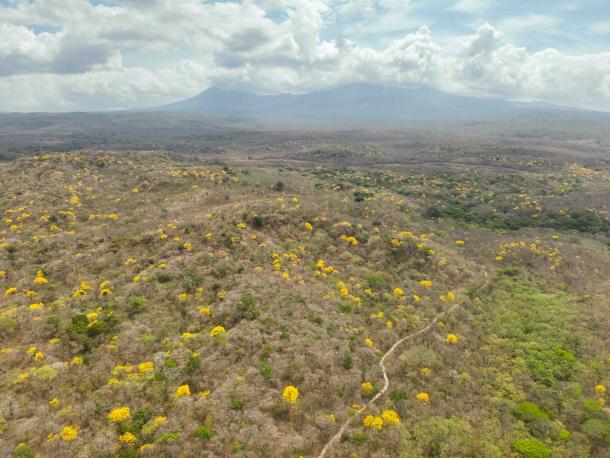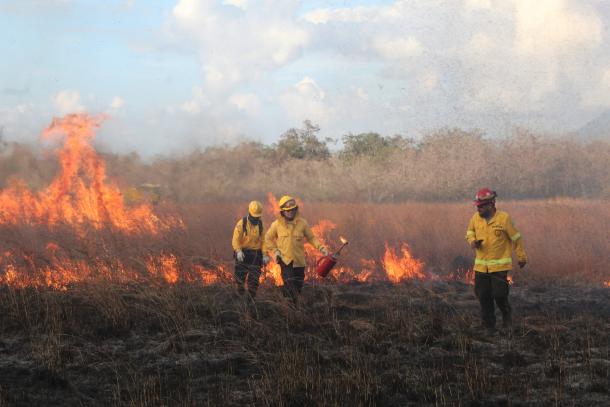
The tropical dry forest of ACG. Photo by Melissa Espinoza.
In a recent article for Mongabay, journalist Liz Kimbrough takes a hard look at the future of tropical dry forests—one of the most endangered and overlooked ecosystems on Earth. Once sprawling across vast regions of the tropics, these forests have been largely lost to agriculture and development. Today, less than 8% of their original extent remains.
Despite their decline, tropical dry forests continue to support hundreds of millions of people and harbor extraordinary biodiversity. In Central and South America, what’s left are small, scattered patches, often surrounded by farms, roads, and towns.
The article features the insights of Drs. Dan Janzen and Winnie Hallwachs, who have spent decades studying and protecting the Área de Conservación Guanacaste (ACG) in northwestern Costa Rica. Janzen explains, “Tropical dry forest was the major ecosystem in the tropics... it’s all [mostly] gone now, because it has been turned into agriculture and pastures.”
Making matters worse, these forests are rarely protected at a meaningful scale. And while rainforests often capture the world’s imagination, dry forests—less lush and more seasonal—are easier to overlook. “The survivors are those little patches of forest that still exist out there and the species that live in those little patches,” says Janzen. “But conserving them is almost an impossible task because the little fragments are not spectacular. They don’t look like gorgeous rainforests.”
Climate change adds another layer of complexity. In dry forests, many species rely on seasonal rainfall as a signal to feed, breed, or migrate. As Hallwachs explains, “Much of the biodiversity and intricacy of tropical forests relies on cues that the participating organisms can all detect… And in dry forest, they had the major cue of the beginning of the rains. And now there’s a lot of stuttering in the cues.” These disruptions are having a devastating impact on insect populations and the many species that depend on them.
Still, there is hope—especially in places like ACG. Janzen notes that the area was intentionally created by acquiring farmland and pasture to reconnect isolated forest fragments. Today, ACG spans over 700 square kilometers (270 square miles) and contains one of the largest actively regenerating tropical dry forests in the world.
To safeguard the future of these forests, the couple advocates for urgent, hands-on conservation strategies. Beyond traditional research, they call for bold interventions like supplemental feeding, irrigation, and assisted migration of species to more suitable habitats. “We know, like the rest of the globe, it’s [tropical dry forests] going to be badly whacked,” says Hallwachs. “We know for certain it will be much less diverse than it is right now. We feel that the hope lies in the preservation, as much as possible, of forests.”

Firefighters using fire to fight future fires in ACG.